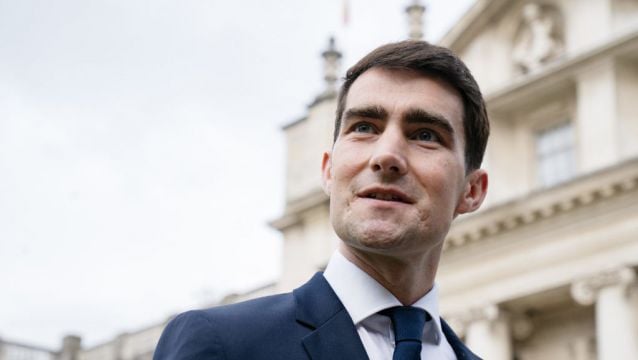Finance minister Jack Chambers has defended the Government’s plans to spend €8 billion in October’s budget following a warning from the Budget watchdog.
Ireland’s next Budget will be worth €8.3 billion, with €6.9 billion for spending and €1.4 billion on tax.
The Irish Fiscal Advisory Council (IFAC) said that because the government had spent beyond its budgetary limit of 5 per cent since 2021, prices had been pushed up.
It warned that additional government spending will have boosted consumer prices by 2 per cent cumulatively by the end of next year.
Costs rose by 0.4 per cent in 2022, 0.6 per cent in 2023, 0.5 per cent in 2024 and are expected to increase by 0.4 per cent in 2025 due to breaches of the rule, it said.
IFAC chairman Seamus Coffey said the extra spending by the government at budget time can give “an illusion of a gain” which is then offset by general cost increases.
“When we see a typical household that might have outgoings of €50,000 a year, that 2 per cent increase equates to €1,000 if the price level is higher, as is estimated to be because of the additional government spending,” he said.
“While households might be benefiting from the additional government spending on one side – so they can see a direct benefit from the additional spending the government is doing – there can be indirect costs through a higher general price level, so it can be an illusion of a gain being offset by these indirect costs.”
The IFAC said the government should “stick to its rule” and if it does, it can “curb price pressures, ensure sustainable growth, help Ireland weather future recessions”.
Responding to the criticism, Mr Chambers said that the cost of maintaining existing services had risen.
“Our spending growth this year is pretty much in line with what it was last year, because there’s been an increase in the cost of providing the existing levels of service, in terms of the inflationary environment and the cost of providing public services, and the additional capital spend we’ve had has resulted in us increasing beyond the 5 per cent to 6.9 per cent.”
He added that excess corporation taxes were being saved for the future in two funds set up during the lifetime of the government: The future Ireland fund and the infrastructure, climate and nature fund.
“We’re saving a significant surplus of our taxation receipts so that we make sure we can continue to invest (in the) long-term where we might not have that those windfall receipts.
“It’s government’s role to strike a balance between the Fiscal Advisory, on the one hand, who want us to restrict spending, or indeed contain the existing levels of services we have in terms of public services; and others who call for much greater levels of spending growth and that’s for us to strike a balance, and I think we’ve done that.”
The fiscal watchdog also noted that employment rates in Ireland are at record highs, with an 84 per cent employment rate expected in 2025.

Wages are exceeding inflation, but prices remain high, it said, driven by capacity constraints and international effects such as energy pressures.
Mr Coffey, an economics lecturer at University College Cork, said there were “some parallels” between the ’00s and now, stating that both featured budgetary surpluses and an over-reliance on certain parts of the economy (housing and corporation tax revenues, respectively).
“So, the surpluses up to 2007 didn’t make things safe then, doesn’t necessarily now,” he said.
“With the exposure to potentially temporary tax revenues, and the narrowing of the tax base – three companies paying €10 billion in corporation tax – there are some parallels to what we saw in the run-up to 2008.”
Mr Coffey said that while there was a clear demand for health and housing services from the State, he said “the everything everywhere all at once” approach “is costly”.
He also said it was too early to say whether the population increase will lead to permanent impacts on the economy.
Mr Coffey outlined a scenario where the number of people who are unemployed increased from record lows of 4 per cent to 5.5 per cent, and where windfall corporation tax receipts fell to a level where Ireland ran a deficit.
“What would happen if tax revenues were slightly lower due to higher unemployment? What would happen if social welfare spending was slightly higher due to that unemployment? And what would happen if you didn’t have these windfall corporate tax receipts?”
He said that if overruns in the Department of Health continue, the overrun this year could be close to €2.5 billion.
“Spending on health – there’s no issue with that. The issue is the planning and does the economy have a capacity to absorb it? So, clearly, from a planning perspective, the figures on last year’s budget aren’t being adhered to and then, as you pump this money into the economy, and it has wider implications on prices and the consequences are being felt elsewhere,” he said.
The IFAC gave its economic analysis ahead of Budget 2025 on October 1st, the final budget of the Fine Gael-Fianna Fáil-Green party government.







